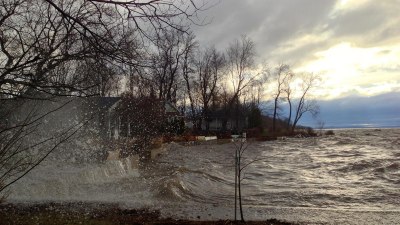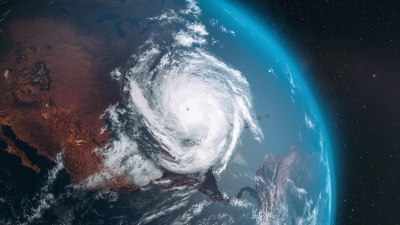Who Really Wins the Battle Between Sun, Rain, and Wind
Exploring the dynamic interplay between sun, rain, and wind in our ecosystem.

The battle between sun, rain, and wind is one of the most fascinating dynamics in nature, influencing various ecosystems, climates, and weather patterns around the world. As these natural elements interplay, they create a complex environmental tapestry that sustains life and impacts human activities. Understanding how they interact can lead us to insights about agriculture, energy production, and even urban planning.
The Role of the Sun
The sun is often seen as the primary force driving weather patterns. It is the Earth's ultimate energy source, with solar radiation heating the atmosphere and the surface of the planet. This heating causes air to rise, creating areas of low pressure that can lead to wind and precipitation. The sun’s energy also drives photosynthesis, the process by which plants convert sunlight into chemical energy. Without sunlight, life as we know it would be impossible.
Sunlight's Impact on Climate
The impact of sunlight on climate is profound. Different regions of the earth receive varying amounts of sunlight, leading to the creation of distinct climate zones. Tropical regions receive the most sunlight, fostering lush ecosystems, while polar areas receive minimal sunlight, resulting in tundra and ice landscapes. The sun is crucial not only for weather but also for maintaining the balance of ecosystems. Unique weather patterns, such as monsoons or desert climates, are largely determined by sunlight interaction with atmospheric conditions.
The Power of Rain
While sun creates the heat, rain is essential for nurturing life. Rainfall is one of the primary sources of freshwater for plants, animals, and humans. It occurs when humidity in the atmosphere condenses into water droplets, resulting in precipitation. This process is vital for maintaining ecosystems and agriculture, as many crops depend on regular rainfall to thrive. Additionally, rain replenishes groundwater supplies and helps maintain rivers and lakes.
The Impact of Rain on Ecosystems
Rain can dramatically alter ecosystems. For instance, areas that experience heavy rainfall often bloom with biodiversity due to the water’s ability to sustain various life forms. Conversely, regions that face drought can become arid, leading to less diversity and harsher living conditions for organisms. Rainforests are vibrant examples of how rain nourishes biodiversity, housing a significant portion of the Earth's plant and animal species. However, excessive rain can lead to flooding, demonstrating rain's dual nature as both a life-giver and a potential destroyer.
The Force of Wind
Wind is another critical player in the earth's climatic systems, acting as a vehicle for the movement of air and moisture. It influences weather patterns through its effects on temperature and pressure. Wind can transport warm air from the tropics to cooler regions and vice versa, affecting local climates and weather phenomena such as storms. Additionally, wind plays an essential role in dispersing seeds and pollen, making it crucial for plant reproduction.
How Wind Shapes Weather
Wind shapes weather patterns in numerous ways. It can bring about changes in temperature, contribute to the formation of clouds, and is often a telltale sign of approaching weather changes. For example, a sudden gust can signify a storm front’s approach. Wind is also responsible for creating waves in oceans and lakes, which play a critical role in aquatic ecosystems. Moreover, wind energy has emerged as a significant renewable resource, providing an alternative to fossil fuels.
Interactions Between Sun, Rain, and Wind
While each element plays a distinct role, it is their interactions that truly shape the earth's climate and ecosystems. For instance, when the sun heats the earth’s surface, it causes air to rise, creating convection currents that generate wind. This wind can then carry moisture-laden air to new locations, where it may cool and condense, leading to rain. Thus, the cycle of evaporation, wind, and precipitation is vital for maintaining ecosystems.
The Water Cycle: A Perfect Example
The water cycle exemplifies the interconnectedness of sun, rain, and wind. Sunlight heats bodies of water, causing evaporation. As moisture rises into the atmosphere, it meets cooler air, where it condenses into clouds. Wind then carries these clouds over land, where they eventually release precipitation in the form of rain, snow, or hail. This cycle is vital for replenishing water sources and ensuring that ecosystems are sustained.
Human Impact on the Elements
Humans have significantly influenced the natural interplay between sun, rain, and wind through activities such as deforestation, urbanization, and fossil fuel consumption. For example, urban areas often trap heat, creating localized climatic changes that can disrupt natural weather patterns. Deforestation can reduce rainfall in some regions, while excessive emissions from vehicles and industry can alter wind patterns and even contribute to climate change.
Climate Change and Weather Interactions
Climate change poses significant challenges to the natural dynamics of sun, rain, and wind. Altered temperatures can lead to increased evaporation rates, impacting precipitation patterns and creating extremes such as droughts or floods. Rising global temperatures also affect wind patterns, potentially leading to more severe storms and unusual weather occurrences. Understanding these changes is essential for climate adaptation and resilience.
Balancing Act: Agriculture and Water Management
Agriculture is heavily reliant on the interplay of sun, rain, and wind. Farmers must ensure their crops receive adequate sunlight and water while considering the effects of wind. Innovative practices in water management, such as rainwater harvesting and efficient irrigation systems, help to optimize inputs, mitigate risk, and increase yields. Furthermore, crop rotation and diversification can protect against the unpredictable nature of weather patterns.
The Future: Sustainability and Resilience
As we look to the future, understanding the balance between sun, rain, and wind will be critical in addressing the challenges posed by climate change. Sustainable practices can help mitigate negative impacts while leveraging natural forces for energy and agriculture. For instance, solar farms can harness sunlight, while wind turbines convert gusts into renewable energy, providing cleaner alternatives to conventional resources.
In conclusion, the battle between sun, rain, and wind is not a conflict to be won or lost but rather a delicate balance that governs our environment. Each element plays a crucial role in sustaining life and shaping the climate we experience. By recognizing the interconnectedness of these forces and their impact on our ecosystems, we can develop sustainable practices that honor their ethos and ensure a healthy planet for future generations. The synergy between these natural elements creates a rich tapestry of life, emphasizing the need to respect and preserve the delicate balance of nature.











